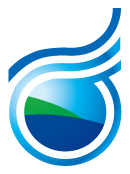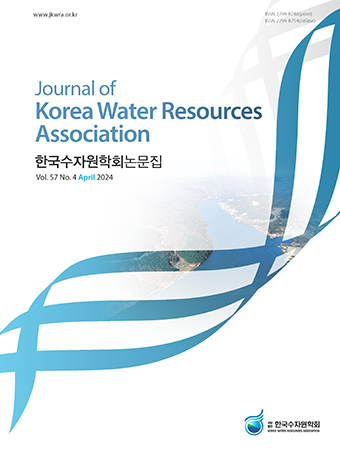Abstract
References
Brown, S.A., and E.S. Clyde (1989), Design of Riprap Revetment, Hydraulic Engineering Circular No. 11, FHWA-IP-89-016, Prepared for the Federal Highway Administration, Washington, D.C.. Ko, J.U. (1975), “A Study on fluvial phenomena in the Bended Alluvial Rivers”, Journal of Korea Water Resources Association, Vol. 8, No. 2, pp.75-80. Lacey, G., Stable Channels in Alluvium, Proceedings of the Institute of Civil Engineers, v. 229., 1930. Lane, E. W. (1957), A Study of the Shape of Channels Formed by Natural Streams Flowing in Erodible Material, Missouri River Division Sediments Series No. 9, U.S. Army Engineer Division, Missouri River, Corps of Engineers, Omaha, Nebraska. Langbein, W.B. and L.B. Leopold (1996), River Meanders - Theory of Minimum Variance, USGS Professional Paper 422-H. Laursen, E.M. (1960), Scour at Bridge Crossings, May, Journal Hydraulic Division, ASCE, v. 92, No. HY3. Leopold, L.B., and M.G. Wolman (1960), River Meanders, Geologic Society of America Bulletin, v. 32, pp. 769-794. Liu, H.K., F.M. Chang, and M.M. Skinner (1961), Effect of Bridge Construction on Scour and Backwater, Department of Civil Engineering, Colorado State University, Report Number CER60HKL22. Mussetter, R. A., Lagasse, P.F., Harvey, M.D., and Anderson, C.E. (1994), Sediment and Erosion Design Guide, November, prepared for the Albuquerque Metropolitan Arroyo Flood Control Authority, RCE Reference Number 90-560. Pemberton, E.L. and Lara, J.M. (1984). Computing Degradation and Local Scour, Technical Guideline for Bureau of Reclamation, Engineering and Research Centre, Bureau of Reclamation, Denver, Colorado, USA. Richardson, E.V., L.J. Harrison, and S.R. Davis (1991), Evaluating Scour at Bridges, FHWA-IP-90-0 17, Hydraulic Engineering Circular No. 18, U. S. Department of Transportation, FHWA, Turner Fairbanks Highway Research Center, McLean, Virginia. Simons, Li & Associates, Inc. (1989a), Design Guidelines & Criteria, Channels & Hydraulic Structures on Sandy Soil, June, prepared for Urban Drainage and Flood Control District, Denver, Colorado and The City of Aurora, Colorado. Simons, Li & Associates, Inc. (1989b), Standards Manual for Drainage Design and Floodplain Management in Tucson, Arizona, December, prepared for the City of Tucson Department of Transportation, Engineering Division. Song, J.W. Choi, I.H., and Kim, J.H (1994)., “A Study on Selected Transverse Bed Slope Models in Channel Bend”, Journal of The Korea Society of Civil Engineers, Vol. 14, No. 6, pp.1395-1404. U.S. Army Corps of Engineers (1993), Velocity and Scour Prediction in River Bends, Waterways Experiment Station.
Information
- Publisher :KOREA WATER RESOURECES ASSOCIATION
- Publisher(Ko) :한국수자원학회
- Journal Title :Journal of Korea Water Resources Association
- Journal Title(Ko) :한국수자원학회 논문집
- Volume : 49
- No :6
- Pages :529-536
- Received Date : 2015-12-06
- Revised Date : 2016-01-12
- Accepted Date : 2016-03-31
- DOI :https://doi.org/10.3741/JKWRA.2016.49.6.529




 Journal of Korea Water Resources Association
Journal of Korea Water Resources Association










